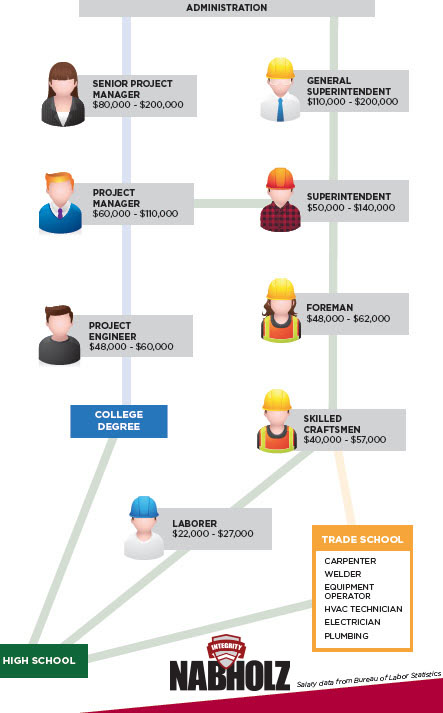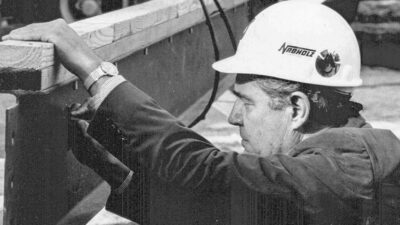 This is the first part in a two part series on Nabholz’ recruiting efforts. Find part two here.
This is the first part in a two part series on Nabholz’ recruiting efforts. Find part two here.
At Nabholz, we see our recruiting efforts as investing in the lives of future construction workers where we live and work. As with any other investing, it’s important to start early. For us, that means engaging with students and educating them about opportunities in the construction industry at the elementary, intermediate, and high school levels.
We know the importance of career guidance for children at an early age. Several studies show that children aged 7-10 years start to begin thinking about what they want to be when they grow up. By the time a child is in 2nd grade, they are already exploring the careers chosen by their grandparents, parents, aunts, uncles, and others.
Here are a few more reasons we think it’s important to invest early on in a child’s education:
- Children may do better in school if they can see how education connects them to a successful future.
- It helps children discover the variety of jobs available to them.
- It helps connect what students are learning in school to real-world situations.
- Children start to visualize themselves in a real-world occupation.
- It encourages students to develop work-readiness skills such as working in teams, making decisions, solving problems, and being a leader.
Changing Opinions About Careers in the Construction Industry
Careers in the construction industry hold a number of stigmas that might prevent people from pursuing a job in the field. For example, many think construction workers didn’t go to school or couldn’t find work anywhere else, or that construction jobs pay poorly. That is just not the case.
A lot of schooling and training is involved in becoming a skilled tradesperson and it’s certainly not a job for the inept. Many skilled craftspeople attend a trade school to learn their craft while concurrently earning an income. And once a craftsperson earns their certification, they can only expect their income to go up. In fact, the average skilled craft professional makes $9,835 more than a recent college graduate.
How to Get Involved
Seek Out STEM Programs
One of the easiest ways to work with students is to get involved with the STEM programs at schools. For instance, Nabholz sponsors a builders’ club at Forest Heights STEM Academy in Little Rock. Many schools participate in STEM workshops and need professionals to talk to kids. Make sure to foster good relationships with school administration at the beginning of the year and volunteer to present to classes.
Partner with Vo-Tech Organizations
Nabholz encourages employees to get involved in mentoring and education programs and allow their work schedules to be flexible enough to accommodate mentoring activities. Kelcy Hunter is a project engineer at Nabholz’ Oklahoma City office and a Career Tech construction graduate from Gordon Cooper Tech Center. She’s a carpenter who is cross-trained in plumbing. She often speaks on behalf of trades education and, like other Nabholz employees, judges SkillsUSA contests.
Look for Unique Opportunities
If you want to expose students to trades even earlier, consider volunteering at a local school to set up a construction day, just like our Kansas office did at Holton Elementary. Each quarter, elementary students from Holton USD 336 celebrate by throwing a “PBIS Big Event”—a rewards day to reinforce positive attitudes and encourage good behavior. Nabholz hosted all 500 K-5th grade students at the new Holton Elementary School for the last PBIS Big Event of the year. Each class had the opportunity to tour their new school and participate in a construction trades fair.
The trades fair featured 10 different stations: concrete; plumbing; electrical; framing; sheet rock, mud and taping; masonry; painting; excavation; and landscaping. Each station was equipped with a hands-on learning activity, boards with definitions and fun facts, and a craftsperson to assist the students and answer any trade specific questions. Additionally, icons representing each trade were placed throughout the building so students could easily identify each type of work while on their tour. Students and teachers alike had a blast learning about construction, their new learning spaces, and how their new education facility was built.
Conclusion
Get involved. Early. Advocacy for construction careers is critical in closing the skills gap.

